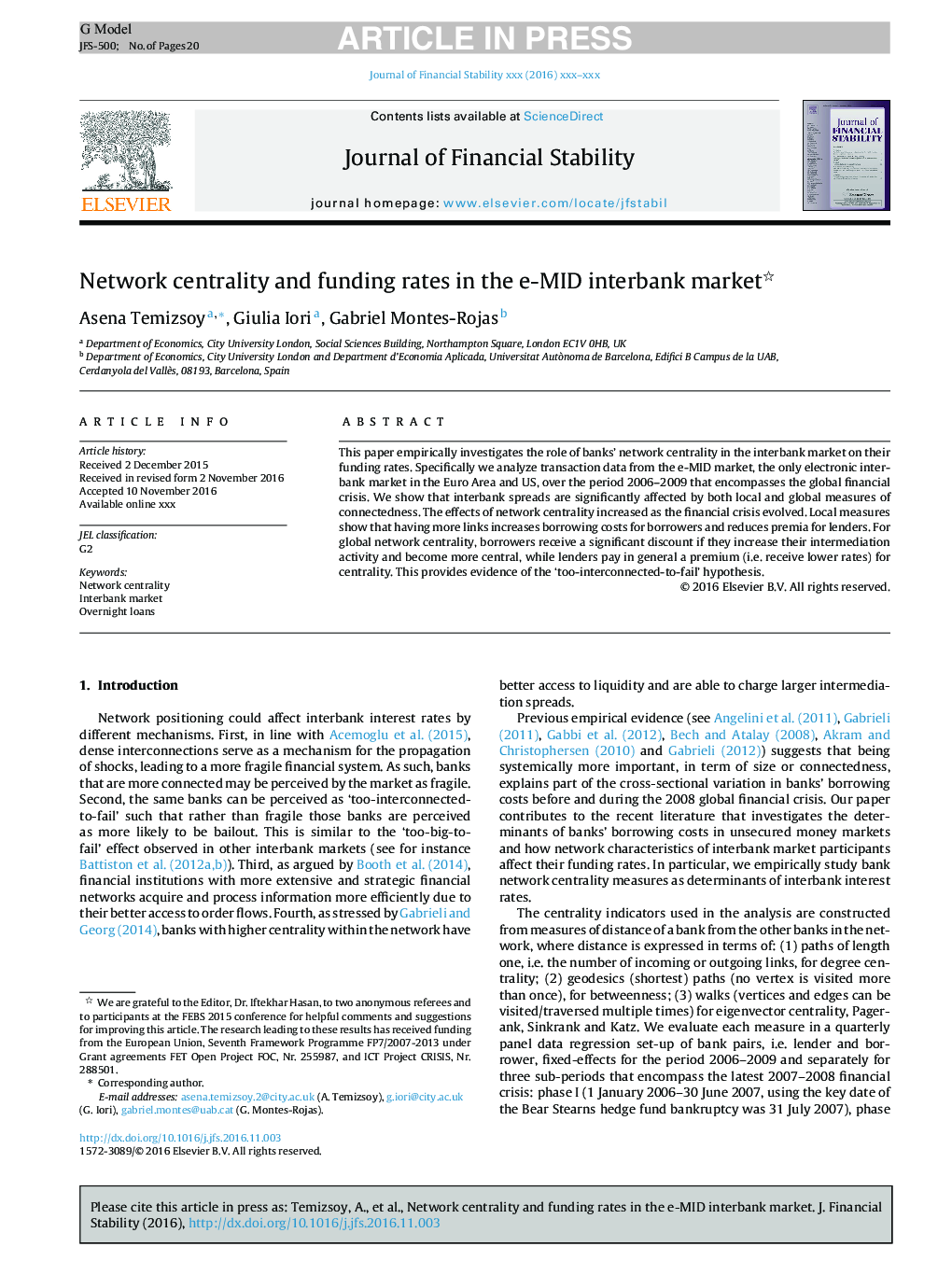| Article ID | Journal | Published Year | Pages | File Type |
|---|---|---|---|---|
| 7409347 | Journal of Financial Stability | 2017 | 20 Pages |
Abstract
This paper empirically investigates the role of banks' network centrality in the interbank market on their funding rates. Specifically we analyze transaction data from the e-MID market, the only electronic interbank market in the Euro Area and US, over the period 2006-2009 that encompasses the global financial crisis. We show that interbank spreads are significantly affected by both local and global measures of connectedness. The effects of network centrality increased as the financial crisis evolved. Local measures show that having more links increases borrowing costs for borrowers and reduces premia for lenders. For global network centrality, borrowers receive a significant discount if they increase their intermediation activity and become more central, while lenders pay in general a premium (i.e. receive lower rates) for centrality. This provides evidence of the 'too-interconnected-to-fail' hypothesis.
Keywords
Related Topics
Social Sciences and Humanities
Economics, Econometrics and Finance
Economics, Econometrics and Finance (General)
Authors
Asena Temizsoy, Giulia Iori, Gabriel Montes-Rojas,
